- Documentation
- Live Streaming Kit
- Quick start
- Quick start (with cohosting)
Quick start (with cohosting)
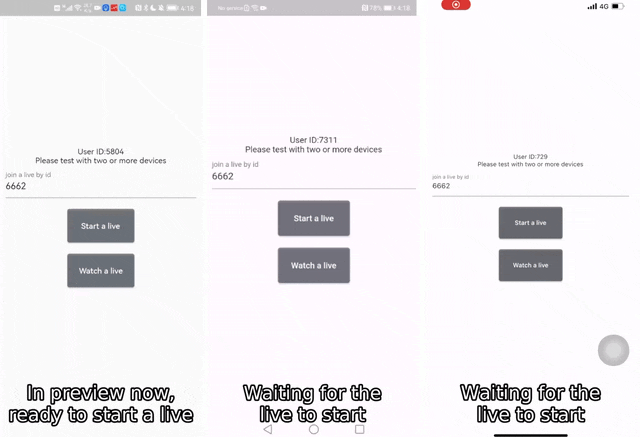)
Prerequisites
- Go to ZEGOCLOUD Admin Console to create a UIKit project.
- Get the AppID and AppSign of the project.
If you don't know how to create a project and obtain an app ID, please refer to this guide.
Integrate the SDK
Add ZegoUIKitPrebuiltLiveStreaming as dependencies
Run the following code in your project's root directory:
flutter pub add zego_uikit_signaling_plugin
flutter pub add zego_uikit_prebuilt_live_streamingImport the SDK
Now in your Dart code, import the Live Streaming Kit SDK.
import 'package:zego_uikit_signaling_plugin/zego_uikit_signaling_plugin.dart';
import 'package:zego_uikit_prebuilt_live_streaming/zego_uikit_prebuilt_live_streaming';Using the Live Streaming Kit
- Specify the
userIDanduserNamefor connecting the Live Streaming Kit service. liveIDrepresents the live stream you want to start or watch.- Set the
configto theZegoUIKitSignalingPluginplug-in.
userID,userName, andliveIDcan only contain numbers, letters, and underlines (_).- Using the same
liveIDwill enter the same live streaming.
With the same liveID, only one user can enter the live stream as host. Other users need to enter the live stream as the audience.
class LivePage extends StatelessWidget {
final String liveID;
final bool isHost;
const LivePage({Key? key, required this.liveID, this.isHost = false}) : super(key: key);
@override
Widget build(BuildContext context) {
return SafeArea(
child: ZegoUIKitPrebuiltLiveStreaming(
appID: yourAppID, // Fill in the appID that you get from ZEGOCLOUD Admin Console.
appSign: yourAppSign, // Fill in the appSign that you get from ZEGOCLOUD Admin Console.
userID: 'user_id',
userName: 'user_name',
liveID: liveID,
config: isHost
? ZegoUIKitPrebuiltLiveStreamingConfig.host(
plugins: [ZegoUIKitSignalingPlugin()],
)
: ZegoUIKitPrebuiltLiveStreamingConfig.audience(
plugins: [ZegoUIKitSignalingPlugin()],
),
),
);
}
}Then, you can start a live stream. And the audience can watch the live stream by entering the liveID.
Config your project
Android:
1. modify the compileSdkVersion
If your project is created with Flutter 2.x.x, you will need to open the your_project/android/app/build.gradle file, and modify the compileSdkVersion to 33.
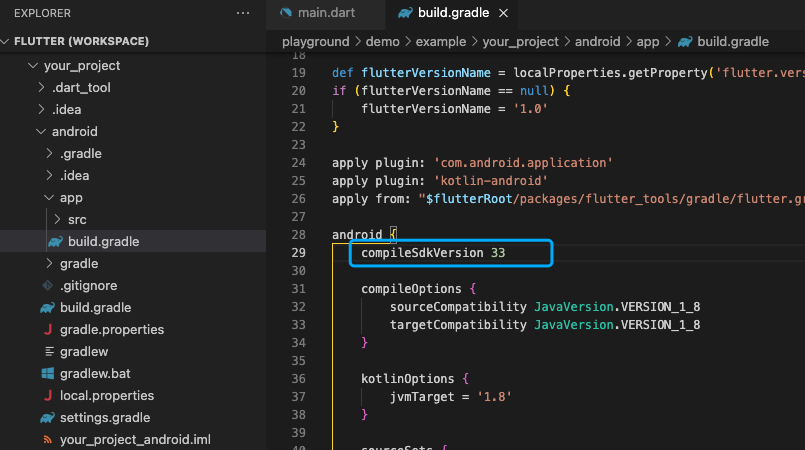)
2. And in the same file, edit the minSdkVersion.
minSdkVersion 21
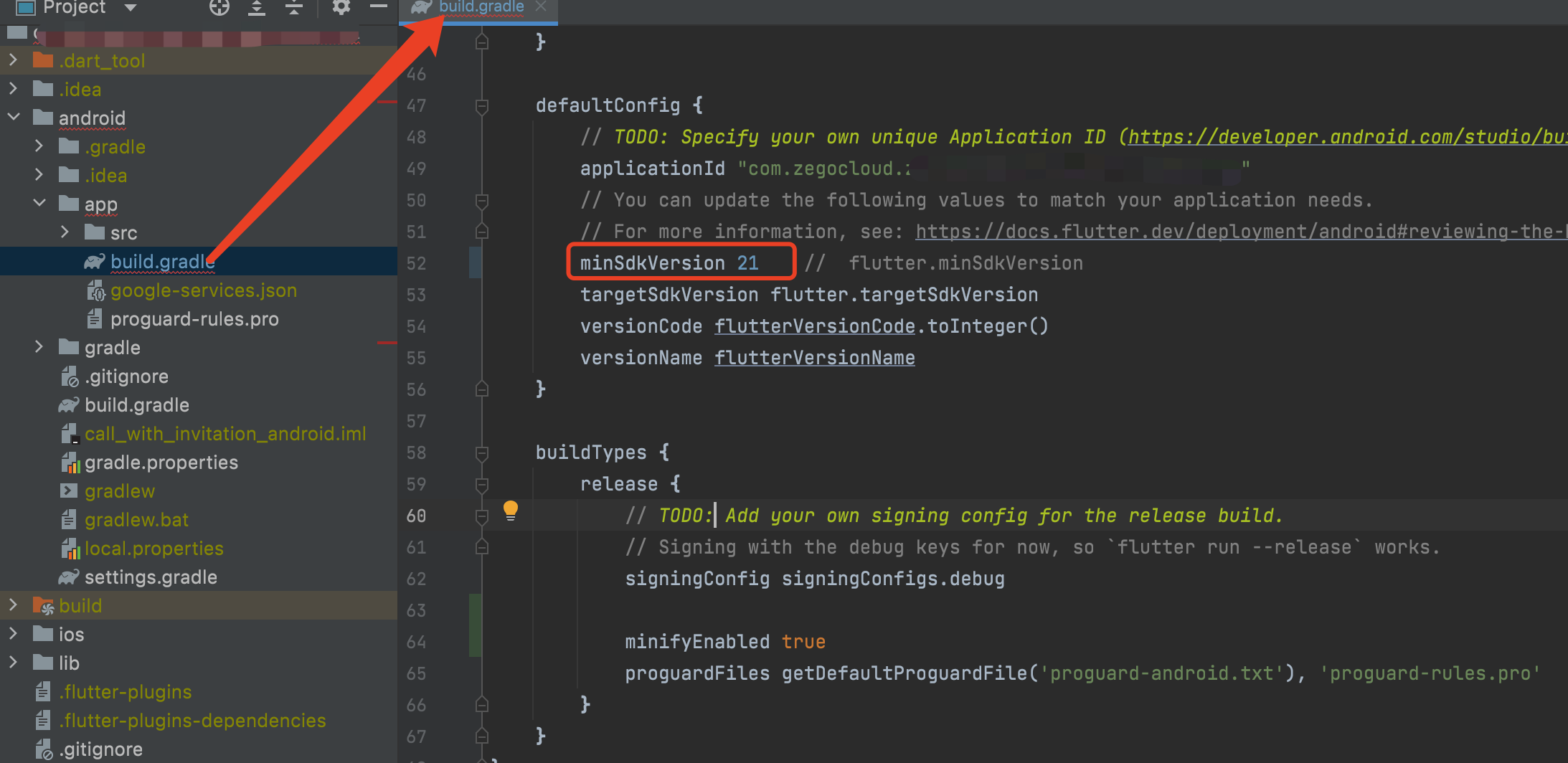)
3. Add app permission.
Open the file your_project/app/src/main/AndroidManifest.xml, and add the following:
<uses-permission android:name="android.permission.ACCESS_WIFI_STATE" />
<uses-permission android:name="android.permission.RECORD_AUDIO" />
<uses-permission android:name="android.permission.INTERNET" />
<uses-permission android:name="android.permission.ACCESS_NETWORK_STATE" />
<uses-permission android:name="android.permission.CAMERA" />
<uses-permission android:name="android.permission.BLUETOOTH" />
<uses-permission android:name="android.permission.MODIFY_AUDIO_SETTINGS" />
<uses-permission android:name="android.permission.WRITE_EXTERNAL_STORAGE" />
<uses-permission android:name="android.permission.READ_PHONE_STATE" />
<uses-permission android:name="android.permission.WAKE_LOCK" /><img src="https://storage.zego.im/sdk-doc/Pics/ZegoUIKit/Flutter/live/permission_android.png" width=800>4. Prevent code obfuscation.
To prevent obfuscation of the SDK public class names, do the following:
a. In your project's your_project > android > app folder, create a proguard-rules.pro file with the following content as shown below:
-keep class **.zego.** { *; } -keep class **.**.zego_zpns.** { *; }
b. Add the following config code to the release part of the your_project/android/app/build.gradle file.
proguardFiles getDefaultProguardFile('proguard-android.txt'), 'proguard-rules.pro'
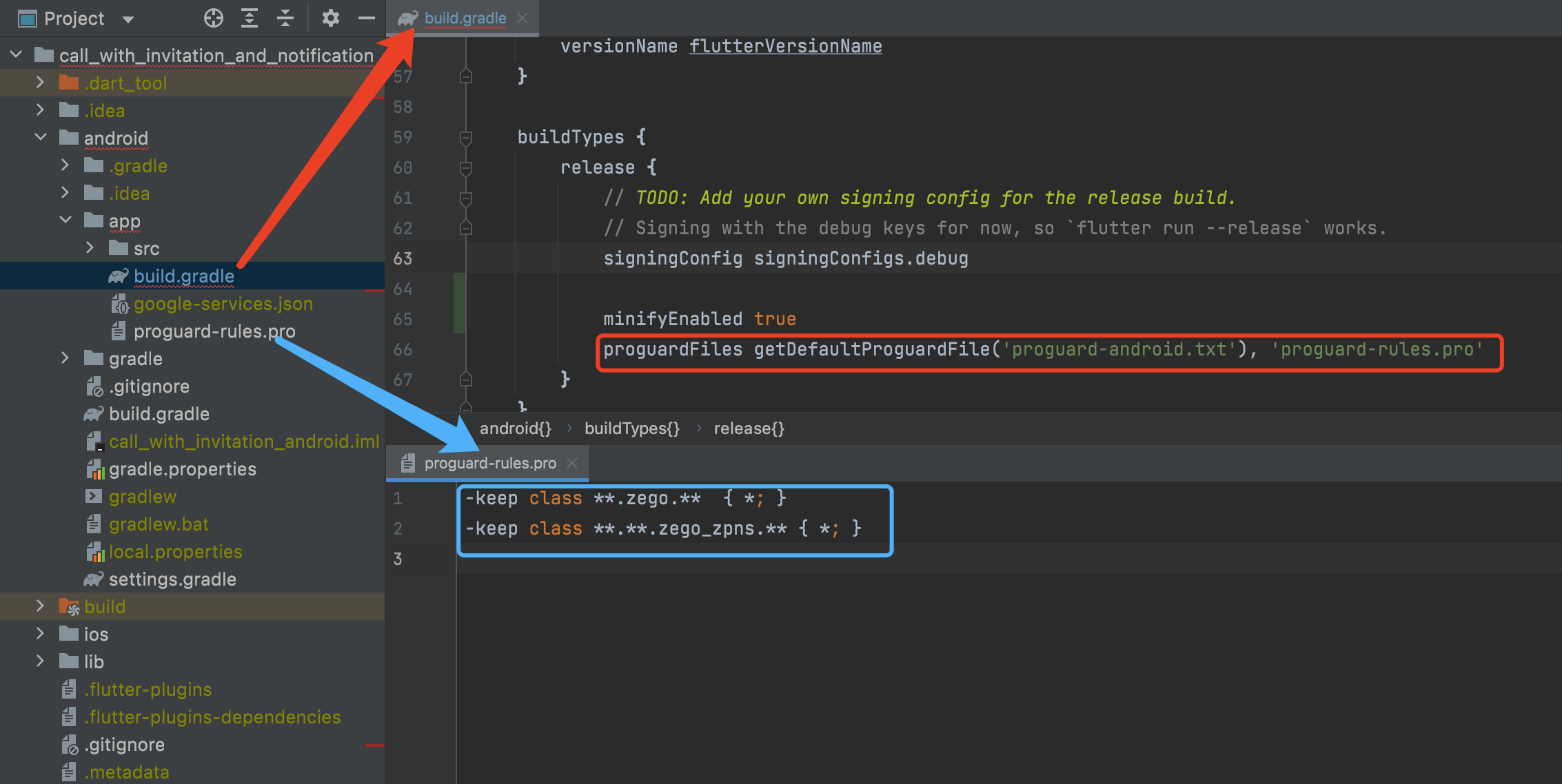)
iOS:
1. Add app permissions.
a. Open the your_project/ios/Podfile file, and add the following to the post_install do |installer| part:
# Start of the permission_handler configuration
target.build_configurations.each do |config|
config.build_settings['GCC_PREPROCESSOR_DEFINITIONS'] ||= [
'$(inherited)',
'PERMISSION_CAMERA=1',
'PERMISSION_MICROPHONE=1',
]
end
# End of the permission_handler configuration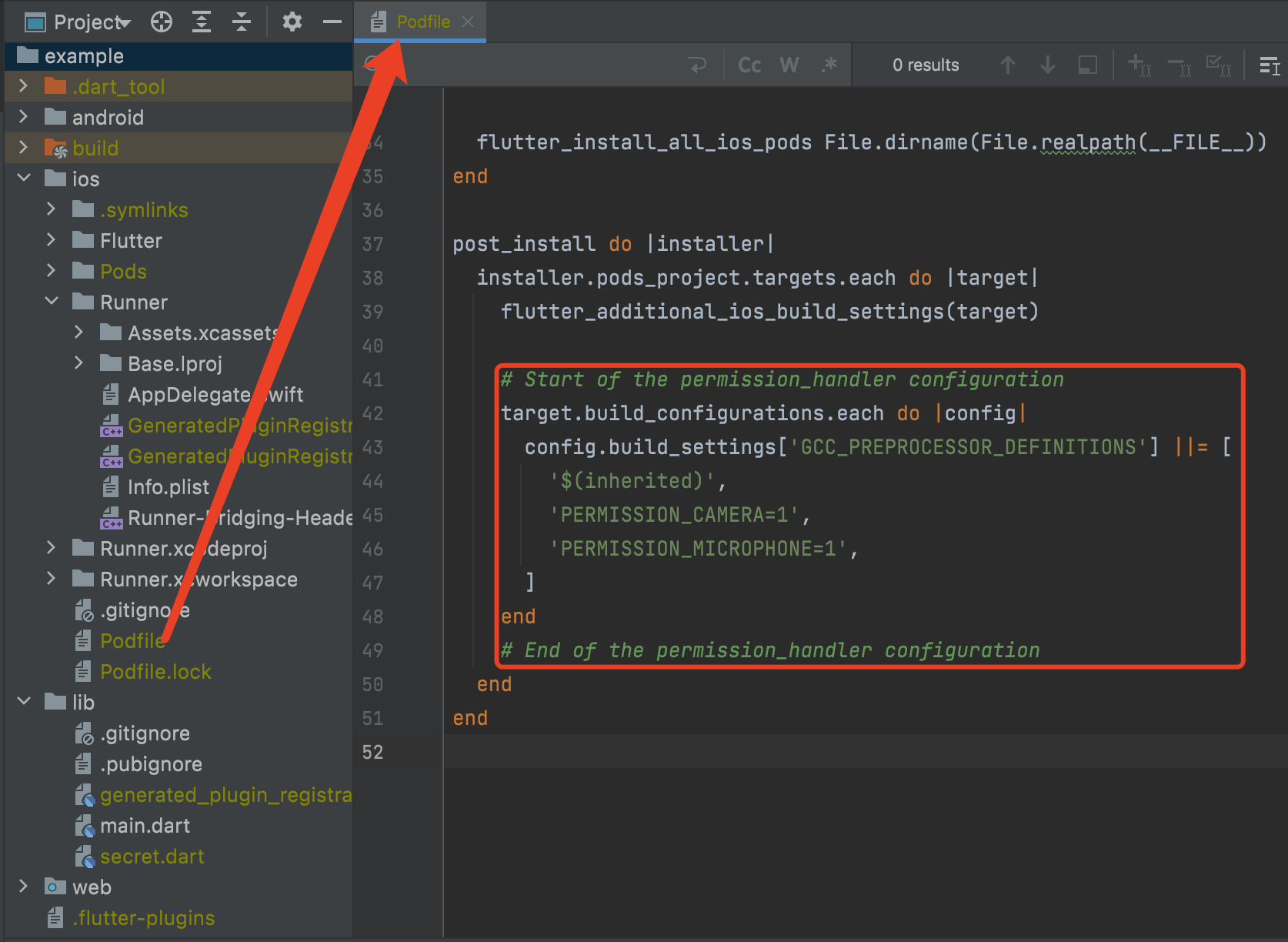)
b. Open the your_project/ios/Runner/Info.plist file, and add the following to the dict part:
<key>NSCameraUsageDescription</key>
<string>We require camera access to connect</string>
<key>NSMicrophoneUsageDescription</key>
<string>We require microphone access to connect</string>)
2. Disable the Bitcode.
The following SDKs need to have Bitcode disabled:
- zego_zim
- zego_pns
- zego_express_engine
a. Open the your_project > iOS > Runner.xcworkspace file.
b. Select your target project, and follow the notes on the following two images to disable the Bitcode respectively.
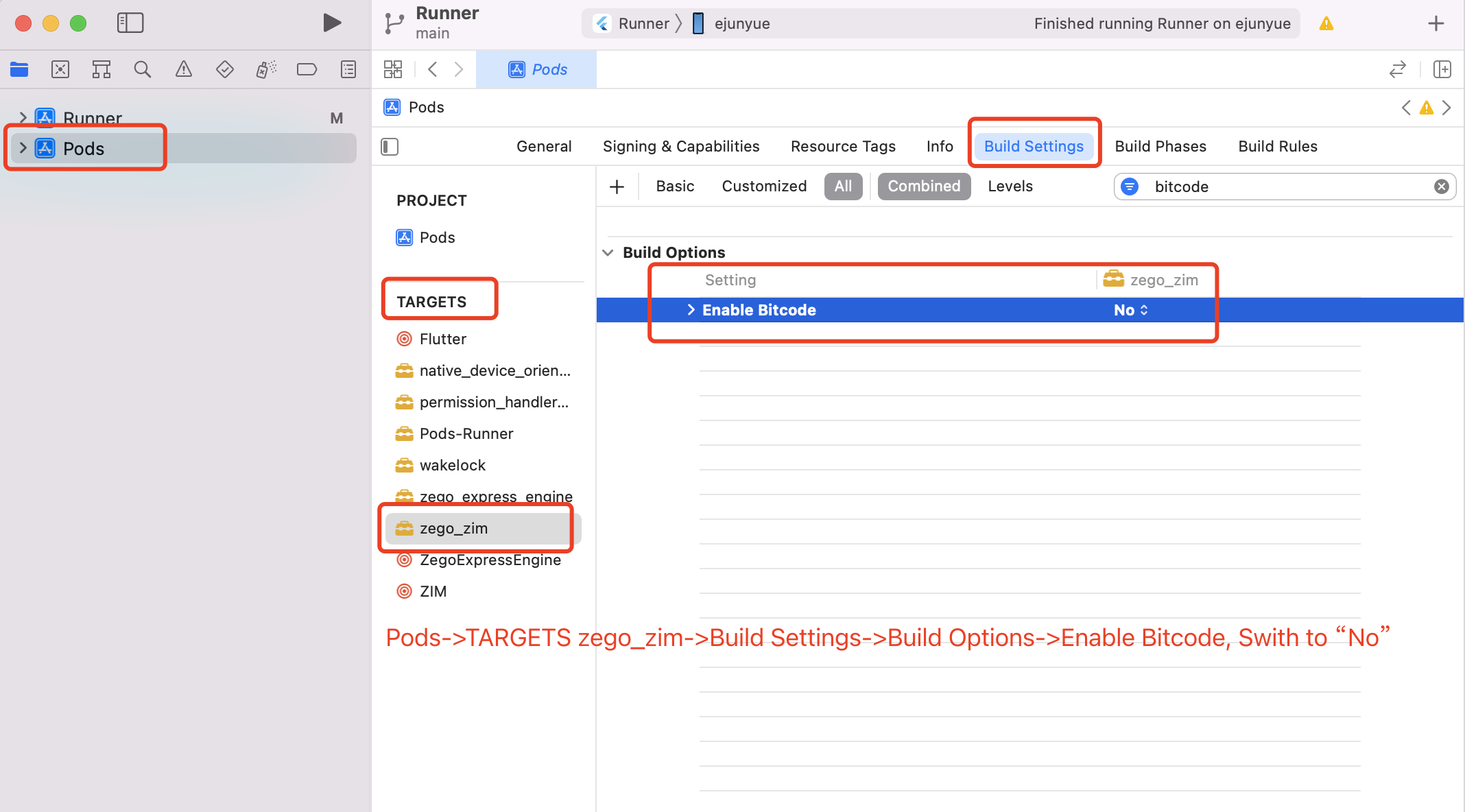)
)
Run & Test
Now you can simply click the Run or Debug button to run and test your App on the device.
)

